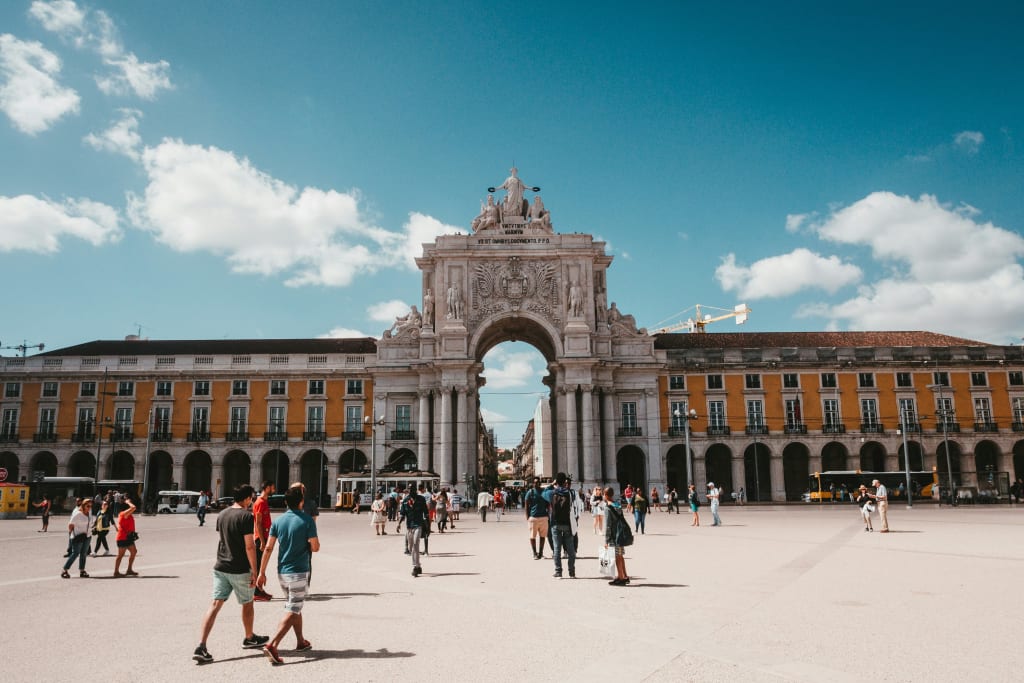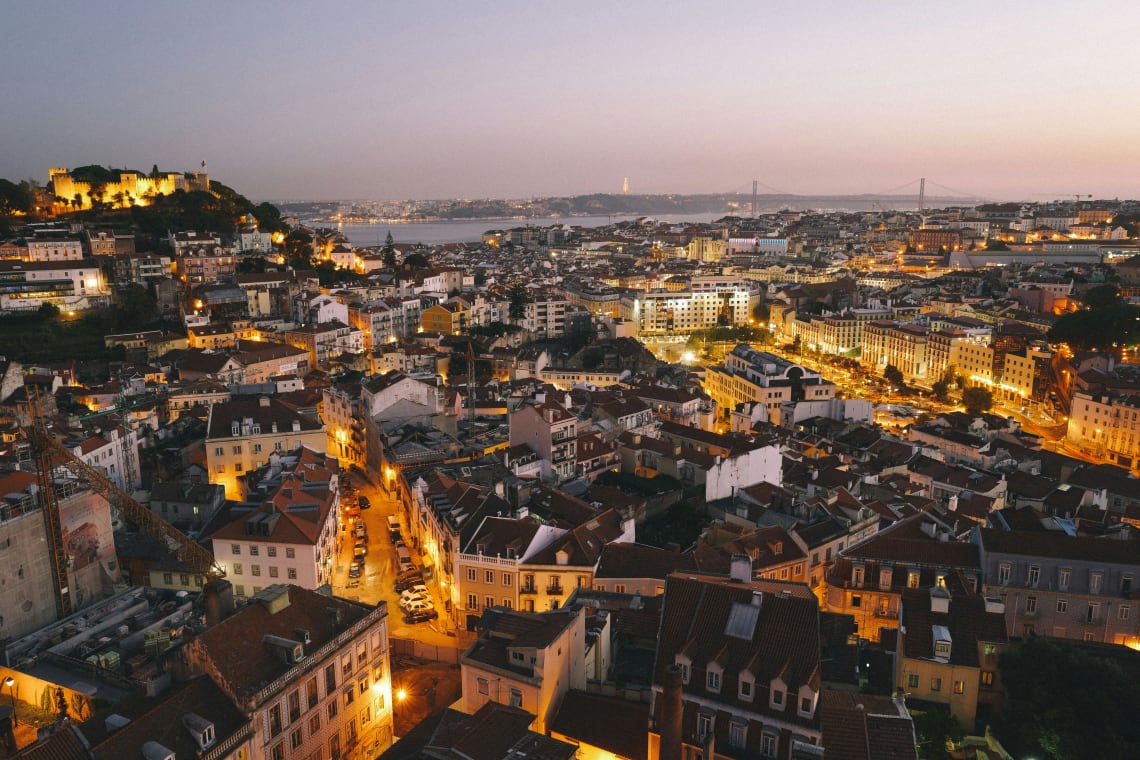The best Portugal travel tips: all you need to know
Seeking the best Portugal travel tips? Discover hidden gems, budget hacks, how to get around, the best food to try, and more.
9min

Planning a trip to Portugal? This vibrant country with stunning coastlines, historic cities, and delectable cuisine captivates every type of traveler. Whether you dream of exploring ancient castles, listening to traditional Fado music, or relaxing on sunny beaches, some helpful Portugal travel tips can enhance your experience.
From navigating transportation to embracing local customs, this comprehensive guide has got you covered. Let’s make your Portugal trip truly unforgettable.
Portugal travel tips: all you need to know
The best time to visit Portugal
Choosing the best time to visit Portugal depends on your preferences and the experiences you seek. The shoulder seasons, spring (April–May) and fall (September–October), offer pleasant weather with fewer crowds and lower accommodation rates. Temperatures are mild, ranging from 14ºC to 25ºC, ideal for outdoor activities like hiking and exploring historic sites.
For beach lovers, summer (June–August) brings sunshine and warm waters. This is also the peak tourist season, so expect higher prices and busier attractions. If you plan to soak up the sun in the Algarve or on the islands, booking well in advance is a good idea.
Winter (November–March) is ideal for those seeking a quieter, more budget-friendly trip. The Algarve and Madeira offer mild temperatures, perfect for enjoying the dramatic cliffs and beaches. Although some coastal businesses close during the winter months, exploring cities like Lisbon and Porto can be delightful with fewer crowds.

Discovering Portugal's gems
For those short on time or eager to tick off those must-see destinations, consider creating an itinerary to experience the best of Portugal. Here’s a short list with our favorite Portuguese destinations to get you started.
Lisbon: history, charm, and Pastéis de Nata
Lisbon, the capital, bursts with energy, boasting centuries-old architecture, charming yellow trams rattling up and down its hills, and delicious pastries.
Don’t miss out on exploring the historic Alfama district, with its narrow cobblestone streets and traditional Fado houses. Ride the iconic Tram 28, offering breathtaking views of the city center. Visit the Jerónimos Monastery and Belém Tower, historic gems reminding of Portugal's Age of Discovery.
To round it all off, why not enjoy some traditional fado music? This melancholic music genre is quintessentially Portuguese and adds a unique element to your Lisbon nights.
For navigating the city's ups and downs, the metro system in Lisbon is cheap and efficient, and even takes you to the airport.

Porto: sipping Port Wine by the Douro River
Porto, in northern Portugal, provides a different yet equally captivating experience.
Imagine colorful houses clinging to steep slopes overlooking the Douro River. Explore the Ribeira district — a UNESCO World Heritage Site — lose yourself in its labyrinthine alleyways adorned with tiled facades, and stumble upon quirky shops and restaurants.
Take a Douro Valley cruise to witness the sprawling vineyards clinging to steep valley slopes, where the famous Port wine originates.

Sintra: a fairytale escape
Just a short train ride from Lisbon, Sintra feels like stepping into a fairytale.
Pena Palace, with its vibrant colors, will enchant those with a love for majestic, almost fantastical architecture. To beat the crowds — particularly in peak seasons — try to visit Sintra during the week, early in the morning, or later in the afternoon.

Coimbra: history whispers in ancient university walls
Home to one of the oldest universities in the world, Coimbra resonates with academic history. You can wander through the grand halls of the University of Coimbra. Founded in 1290, it boasts a Baroque library holding over 250,000 books. The train system efficiently connects Coimbra to other major Portuguese cities.

The Algarve: soaking up the sun
Dreaming of golden beaches and turquoise waters? The Algarve, Portugal's southernmost region, is a true beach bum paradise.
Lagos, with its dramatic cliffs and hidden coves (like the famous Ponta de Piedade) is a must-visit for anyone who appreciates nature's dramatic artistry. Albufeira is renowned for its vibrant nightlife — perfect for those wanting to let loose.

For more ideas on where to go in Portugal, read these articles:
- Exploring Portugal with a backpack: top destinations, routes, and tips
- TOP 15 Best places to visit in portugal
- The ultimate guide to Peniche, Portugal: a coastal paradise
How to get around in Portugal
Portugal has a wide variety of transportation options for you to choose from. Here’s an overview of the most common choices:
Train travel: Experience scenic journeys on their well-connected railway. You can buy tickets in advance on the Comboios de Portugal website. In European Portuguese, trains are called comboios.
Bus travel: An economical choice, bus networks are widespread, reaching even the smaller villages. You'll find major carriers like Rede Expressos and FlixBus as well as local companies like Rodoviária do Alentejo in the Alentejo region and Vamus in the Algarve. In Portugal, buses are called autocarros.
Driving: If you crave the open road, consider renting a car. Be mindful of toll roads – check payment methods with your rental company to avoid surprises.
What to pack for a trip to Portugal
Packing light makes navigating cobbled streets and hopping on trains a breeze. Comfortable walking shoes are non-negotiable. An adaptor is crucial. You'll need a Type F plug, which has two round pins, similar to most of continental Europe. Be sure to pack or withdraw Euros for your trip to Portugal as that is their local currency.
Pack a light scarf or shawl, even in summer, as churches often require covered shoulders. Sunscreen and a hat are must-haves for sunny days. Although, if you forget anything, shops abound.

How to stay safe in Portugal
Portugal consistently ranks high for safety and boasts a low crime rate. While violent crime is uncommon, stay mindful of pickpockets in crowded areas like trams. Take usual precautions with valuables in busy markets or tourist hotspots.
It's wise to be cautious walking alone late at night, particularly in less populated areas, just like you would in any new place.
How much does it cost to visit Portugal
One of the biggest questions before traveling somewhere new is about cost. Luckily, Portugal is known as a budget-friendly destination. You can travel comfortably in Portugal for as low as €50 per day if you're backpacking or staying in hostels, eating at local restaurants, and taking advantage of free activities.
A mid-range budget, around €75–€150 per day, lets you enjoy more comfortable accommodations, some nicer meals, and attractions. Those on a more luxurious budget (over €150 per day) can indulge in upscale dining, unique stays, and exclusive experiences.
How to visit Portugal on a budget
Traveling on a budget doesn’t mean compromising on amazing experiences. Some easy tips to save money in Portugal include exploring free activities and utilizing local transportation like buses and trams whenever possible.
Consider taking advantage of free walking tours in major cities to familiarize yourself with historical sites and must-sees; you'll likely pick up insider tips along the way. Portugal is full of beautiful churches, many are free to enter, though it's always polite to offer a small donation.
Finding accommodation that doesn’t drain your travel funds isn’t too hard in Portugal. You'll find charming hostels, especially for the solo traveler, tucked away in those cute, cobbled backstreets.

Free accommodation in Portugal
Volunteering in Portugal through Worldpackers offers a unique and budget-friendly way to explore this vibrant country while making a positive impact. Worldpackers connects travelers with local hosts throughout Portugal, providing opportunities to exchange your time and skills for free accommodation and other perks, like meals, tours, and the use of an equipped kitchen.
But saving money is far from being the only reason to opt for this type of exchange. Whether you’re working at a surf camp in the Algarve, helping with permaculture projects in rural Alentejo, or assisting at a hostel in Lisbon, volunteering allows you to dive deep into Portuguese culture and lifestyle.
Instead of just visiting the typical tourist sites, you’ll have the chance to engage with the community, learn the language, and participate in daily life. These experiences give you a richer understanding of Portugal’s culture, traditions, and way of life.
Read our guide on How Worldpackers works to find out more about this travel style, and check out some of the many opportunities available for volunteering in Portugal:
- Enjoy the best hostel life in Porto with free accommodation
- Volunteer welcoming guests in one of Lisbon’s best hostels
- Get a free stay and free surf lessons in Albufeira

Portuguese language tips to help you blend in
While many Portuguese speak English (especially those in the tourism industry), learning some basic phrases in the local language will not only help you navigate but also impress the locals. Who knows? It might even get you a discount on your next pastel de nata.
Start with a few key phrases that will come in handy in everyday situations:
Hello: Olá
Good morning: Bom dia
Good afternoon: Boa tarde
Good evening: Boa noite
Please: Por favor
Thank you: Obrigado (if you're male) / Obrigada (if you're female)
Yes: Sim
No: Não
Excuse me: Com licença
Sorry: Desculpa
Do you speak English?: Fala inglês?
One: Um/uma
Two: Dois/duas
Three: Três
Ten: Dez
Twenty: Vinte
Thirty: Trinta
What time is it?: Que horas são?
Portuguese pronunciation can be tricky for beginners. Here are a few tips to help you sound more like a local:
- The letter “r” at the beginning of a word is pronounced like the English “h.” For example, "Rádio" is pronounced "Hádio."
- The “ão” ending, common in Portuguese, is pronounced nasally, similar to "ow" in "town," but with a nasal sound. For instance, "pão" (bread) is pronounced like "pow" with a nasal twist.
- The letter “s” at the end of a word is often pronounced as a "sh" sound, especially in European Portuguese. For example, "portas" (doors) is pronounced "portash."
Consider using apps like Duolingo or Babbel to help you learn and practice Portuguese on the go or Google Translate to translate phrases, signs and menus.
Portuguese food and drinks you should try
One of our best Portugal travel tips is this - indulging in the country’s culinary delights is an absolute must. Here are some of the treats that you shouldn't miss:
1. Pastel de Nata
No trip to Portugal is complete without tasting the famous Pastel de Nata. This iconic Portuguese custard tart features a flaky pastry crust filled with a creamy egg custard, lightly dusted with cinnamon and powdered sugar.
Best enjoyed warm, these tarts are a perfect snack or dessert and can be found in almost every café across the country. The most famous spot to try them is Pastéis de Belém in Lisbon, where the recipe has been a closely guarded secret since 1837.

2. Bacalhau à Brás
Portugal is known for its love of bacalhau (salted codfish), with over a thousand ways to prepare it. One of the most beloved dishes is Bacalhau à Brás. This hearty dish combines shredded codfish with onions, finely chopped potatoes, eggs, and black olives, all sautéed together to create a rich, flavorful meal.
3. Francesinha
Originating from Porto, the Francesinha is a sandwich that’s not for the faint-hearted. It’s made with layers of cured ham, sausages, steak, and melted cheese, all smothered in a rich, spicy tomato and beer sauce. The sandwich is often topped with a fried egg and served with a side of fries, making it a filling and indulgent dish.

4. Pastéis de Bacalhau
Another delicious way to enjoy Portugal’s beloved bacalhau is through Pastéis de Bacalhau (codfish cakes).
These crispy, golden fritters are made by combining shredded codfish with mashed potatoes, eggs, parsley, and onions, then deep-frying them to perfection. They’re often served as appetizers or snacks and are incredibly addictive.
5. Sardinhas assadas
Sardinhas Assadas (grilled sardines) are a beloved Portuguese dish, especially popular during the summer festivals like the Feast of Saint Anthony in Lisbon.
Fresh sardines are seasoned with coarse sea salt and grilled whole over charcoal, resulting in a crispy, smoky exterior and tender, flavorful flesh. They’re traditionally served on a slice of bread or with boiled potatoes and salad.

6. Queijo da Serra
For cheese lovers, Queijo da Serra is a must-try. This creamy, sheep’s milk cheese comes from the mountainous Serra da Estrela region and is considered one of Portugal’s finest cheeses.
7. Ginja
Make sure you also try Ginja (or Ginjinha), a traditional Portuguese cherry liqueur. Made by infusing sour cherries in alcohol with sugar, Ginja is a sweet, fruity drink often served in small cups with a cherry at the bottom. It’s particularly popular in Lisbon and Óbidos, where you can enjoy it at local bars and cafés.

8. Vinho Verde
To complement your meals, try Portugal’s Vinho Verde, a unique young wine from the Minho region. Known for its light, crisp, and slightly effervescent qualities, Vinho Verde is the perfect accompaniment to seafood and lighter dishes. It’s particularly refreshing on a warm day.
Of course, these are just a few of the many delights that Portugal has to offer. Each region of the country has its own specialties, so be sure to explore and discover the rich culinary heritage that makes Portugal a food lover’s paradise.
Keep reading: 10 unmissable typical dishes to eat like a local in Portugal

We hope you liked our Portugal travel tips! You’re now on your way to experiencing this magical country. Embrace Portugal’s captivating charm and immerse yourself in the country’s culture. Create a free profile on Worldpackers right now and start browsing through all the volunteering positions available there.
You might also like these articles:











